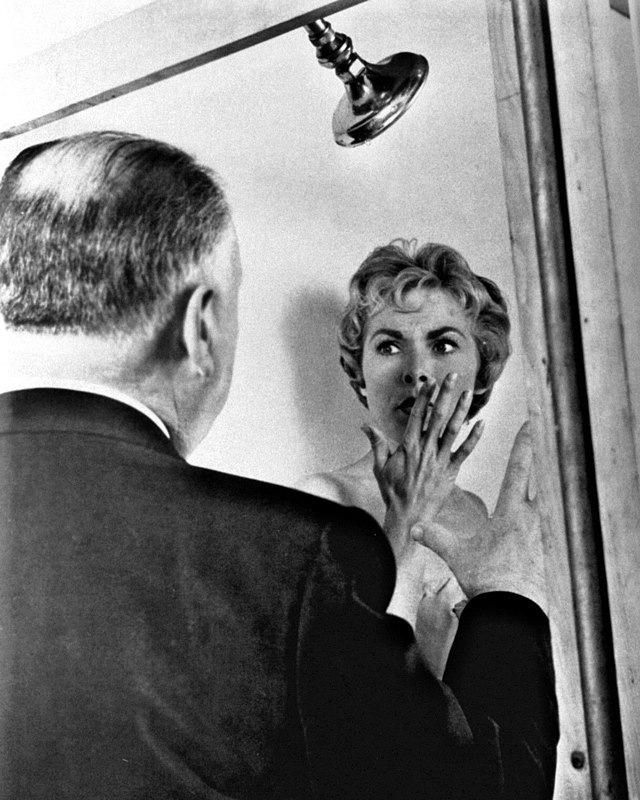With spooky season upon us, you may find yourself once again renting those fright-night film favorites, but they wouldn’t exist today without four pioneering movies. The beloved cliches and tropes that define the modern horror genre have their roots in classics such as Psycho, The Texas Chain Saw Massacre, The Shining, and The Silence of the Lambs. But so many years after the release of these revolutionary films, are they still worth a watch today?
Starting off strong, Alfred Hitchcock lays the ground for many horror movies to come, with his 1960s film, Psycho. Hitchcock´s production of Psycho is revolutionary for a multitude of reasons, ranging from his complex characters to his suspenseful filming techniques.
What stands out most is the well-rounded female lead character played by Janet Leigh, setting the film apart from others at the time, which often portrayed women as stereotypical and one-dimensional. However, Leigh´s character isn´t the only impressive one. The lead characters can be described as complex, intriguing, and human, a result of the film´s quality writing and impressive acting performance. These characters play a part in the suspenseful series of events centering on a runaway thief, a madman, and a group of people attempting to solve a crime.
Hitchcock makes use of visual storytelling and foreshadowing to keep viewers on their toes. This mysterious and psychological classic is arguably Hitchcock´s best, and to this day feels fresh and innovative. Without Psycho, the horror genre would not be where it is today, and with its unpredictable plot twists and engaging nature, it is accessible to a modern-day viewer, even one who doesn´t normally gravitate towards horror movies.
The horror landscape of the ’70s was dominated by one of the first slashers, The Texas Chain Saw Massacre. When directing this unsettling movie, Tobe Cooper employed techniques hardly seen before in his genre, such as unique cinematography techniques, surprisingly well-executed sound effects, and an original plotline that sparked many current tropes. These tactics, combined with the movie´s talented actors, perfectly unconventional pacing, and professional production, create a suspenseful and gory story with plenty of freakish jump scares.
Interestingly enough, the film also has its lighthearted and even beautiful moments as the viewer follows a group of often humorous teens as they go on an idyllic road trip. The picturesque shots of pastel flowers and fields contrast with eerie lighting and gory scenes to create an intriguing juxtaposition between two distinct moods.
Although this film may feel somewhat cliché to a modern viewer, this film is incredibly well produced for its time and paved the way for slasher movies up until today. Any fan of horror looking for a groundbreaking and heart-pounding thriller with a signature 70s style should watch The Texas Chainsaw Massacre.
1980 brought a completely new and uniquely unsettling twist on the horror genre in the form of The Shining, directed by the Oscar-winning Stanley Kubrick. The iconic book by Steven King was brought to a much larger audience in the film at the turn of the decade, inspiring a completely new fear: instead of the chainsaw-wielding lunatic or charming motel owner, the psychopath could be in your very own family. Viewers are especially moved and horrified by the expressions of actress Shelley Duvall, a mother growing increasingly terrified by the actions of her husband and the haunted mountainside mansion they are trapped in.
Kubrick’s eye for visual directing brings an unsettling sense of being in the house with the family, with the sense that something is going wrong just out of frame. More a psychological thriller than a slasher horror, the film puts viewers in mortal fear of those closest to them, as it raises the question: how well can you ever really know anyone?
Artistic and accessible, the audience can’t help but be completely enthralled in the mind-bending eeriness of the haunted mansion as they witness the slow descent into madness of a seemingly ordinary man. Although this movie received no Oscars and limited box-office success at its initial release, over the years, it has become regarded as one of the best horror films ever made.
Just over ten years later, in 1991, the release of The Silence of the Lambs terrified a new generation of horror fanatics. One of the most genuinely chilling movies of all time, and definitely the scariest film on this list, The Silence of the Lambs marks a groundbreaking departure in the “serial killer” sub-genre. Although slashers (demonstrating the lasting impact of Psycho and The Texas Chainsaw Massacre) still dominated the genre, director Jonathan Demme took an entirely new, smart, and bone-chilling approach in this film. Viewers are terrified and enraptured as heroine Clarice, a brilliant FBI agent, works with a convicted serial killer to chase down one still on the loose.
Perhaps the most striking aspect of this film is the sharp contrast between the static characters of earlier films, to the brave, intelligent, and complex heroine and bone-chillingly collected, genius psychopath portrayed in The Silence of the Lambs. The acting is phenomenal, and one could never guess that this masterpiece of a film had a budget far less than many ‘90s horror flicks. Although this is definitely not a fun watch, the movie will leave you haunted, and your perspective on the horror genre changed permanently.




